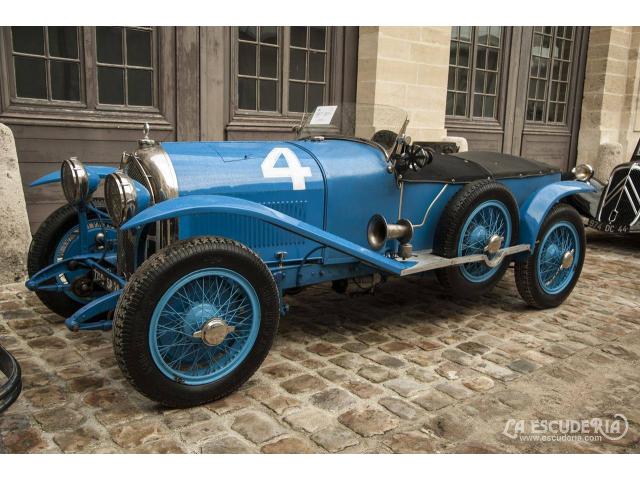1925 Lorraine-Dietrich B3-6 Le Mans Torpedo Sport
- Brand: Lorraine-Dietrich
1925 Lorraine-Dietrich B3-6 Le Mans Torpedo Sport
Based at Luneville in Lorraine, France, De Dietrich et Cie started out as makers of railway locomotives before branching out into automobile manufacture in 1896, by which time the oft-disputed province had been annexed by Germany. Designs by Amédée Bollée, Vivinus and Turcat-Méry were licensed at first before the firm commissioned Ettore Bugatti to come up with some of its own. In 1905, the car/aero engine division's name was changed to 'Lorraine-Dietrich' and the Cross of Lorraine adopted as an emblem, emphasising the company's French origins. Considerable effort was put into racing at this time, using purpose-built cars fitted with enormous engines.
After WWI, with Lorraine restored to France, manufacture of cars (and aero engines) recommenced, the principal models of the 1920s being a 12CV (2.3-litre) four and a brace of sixes: 15CV (3.5-litre) and 30CV (6.1-litre). Of these, the 15CV B3-6 was the most successful, entering the history books by winning the first and third Le Mans 24-Hour races in 1925 and first, second and third in 1926, interrupting Bentley's run of successes. Lorraine thus became the first marque to win the famous endurance classic twice and the first to win in consecutive years. The 15CV was manufactured until 1932 (by which time the firm was known simply as 'Lorraine') when the successor 20CV model was introduced. An expensive failure, the latter led to Lorraine quitting the automobile market in 1935 to concentrate on military projects.
A clean sweep of the Le Mans podium places is almost unheard of, yet that is what Lorraine-Dietrich had achieved in 1926, victory going to the car driven by Bloch/Rossignol. The 3rd place finisher was driven by Henry Stalter and Edouard Brisson, repeating their result of the previous year, which had been achieved driving the car offered here. Carrying competitor number '4', it had covered 2,149.483 kilometres at an average speed of 89.561km/h. Driven again by Stalter/Brisson, chassis number '122892' also competed in the Spa Francorchamps 24 Hours race in 1925, finishing in 5th place. In 1925, '122892' had been the only Lorraine-Dietrich Le Mans entry fitted with twin carburettors, and this innovation was carried over to the successful trio of 1926. This car last competed as an official factory entry in 1926 but continued to be raced by private owners until 1935.
Descriptions & pictures by bonhams & ultimatecarpage & other
| Specification | |
| Production Start | 1925 |
| Country of origin | France |
































